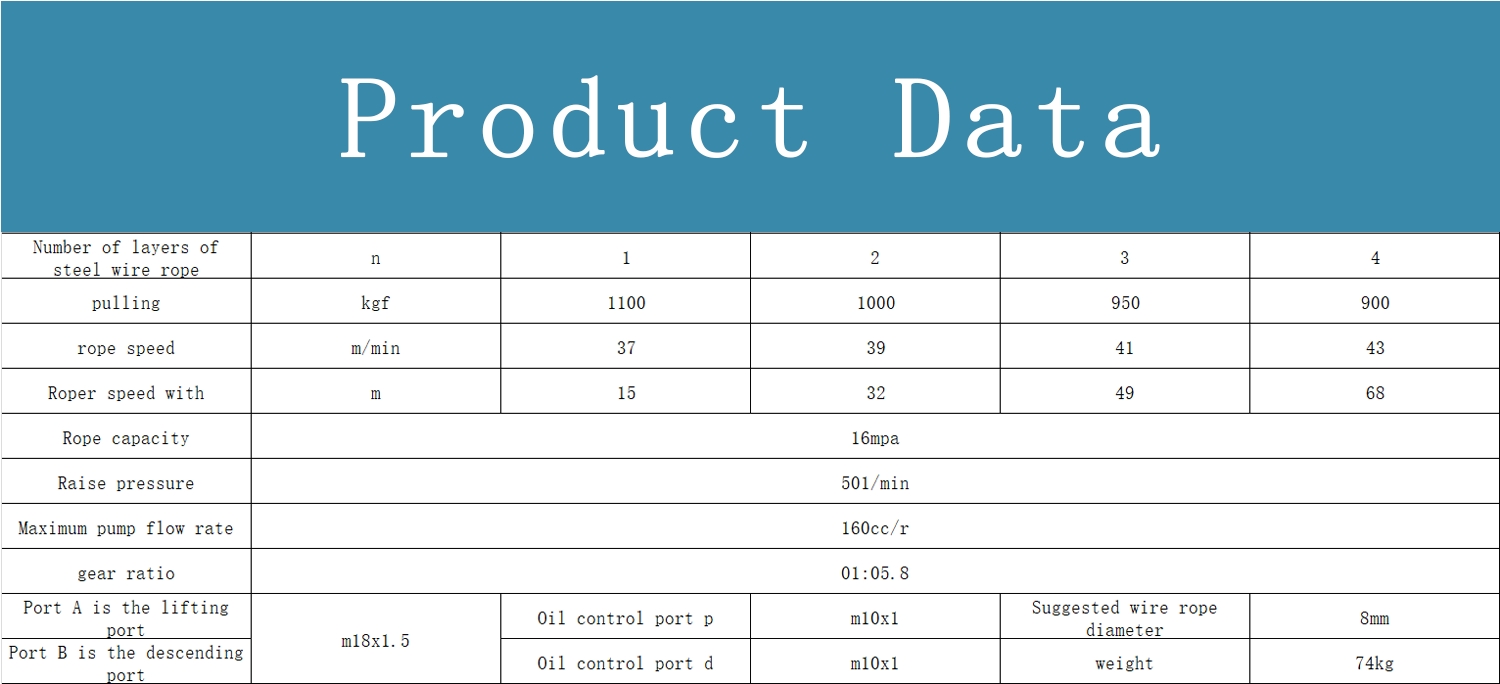 中文版
中文版



Welcome to contact us by phone:0086-0312-7969888
A hydraulic hoist winch is a mechanical device that utilizes hydraulic power to lift, lower, and position heavy loads. This type of winch is commonly employed in various industrial applications where the need for high lifting capacity and precise control is paramount. Hydraulic hoist winches are known for their strength, durability, and ability to handle demanding tasks. Here's an introduction to hydraulic hoist winches:
Key Components of Hydraulic Hoist Winches:
Hydraulic Motor:
The hydraulic motor is a crucial component that converts hydraulic fluid pressure into mechanical energy. It drives the winch's drum or gear mechanism, allowing for the lifting or lowering of loads.
Drum or Gear Mechanism:
The drum or gear mechanism is responsible for winding and unwinding the cable or rope. It determines the winch's lifting capacity and the length of cable it can handle.
Hydraulic Pump:
The hydraulic pump pressurizes the hydraulic fluid, creating the force necessary for the operation of the hydraulic motor. It draws hydraulic fluid from a reservoir and delivers it to the motor.
Control Valve:
Hydraulic hoist winches are equipped with a control valve that allows operators to regulate the flow of hydraulic fluid. This valve provides precise control over the winch's speed and direction, facilitating accurate load handling.
Reservoir:
The hydraulic fluid reservoir stores the hydraulic fluid needed for the system. It ensures a constant and readily available supply of fluid for the pump.
Braking System:
Hydraulic winches typically include a braking system to control and secure the load during lifting or lowering operations. This is crucial for safety and prevents uncontrolled movements.
Hoses and Fittings:
Hydraulic hoses and fittings transport the hydraulic fluid between the pump, motor, and other components. They are vital for maintaining the integrity of the hydraulic system.
Frame and Mounting:
The frame and mounting structure of the winch provide support and stability. They are designed to withstand the heavy loads and harsh conditions often encountered in industrial applications.
Advantages of Hydraulic Hoist Winches:
High Lifting Capacity:
Hydraulic hoist winches are capable of handling heavy loads, making them suitable for applications that require substantial lifting power.
Precise Control:
The hydraulic system allows for precise control over the speed and direction of the winch. This is crucial for applications that demand accurate load positioning.
Durability and Robustness:
Hydraulic hoist winches are known for their durability and robust construction, making them well-suited for heavy-duty and demanding industrial environments.
Adaptability to Various Tasks:
Hydraulic winches are versatile and can be used for various tasks, including material handling, equipment positioning, and lifting in industries such as construction, mining, and manufacturing.
Safety Features:
Hydraulic winches are equipped with braking systems and other safety features to ensure controlled operations and prevent accidents.
In summary, hydraulic hoist winches are reliable and powerful tools for lifting and positioning heavy loads in industrial settings. Their strength, precise control, and durability make them valuable assets in applications where safety and efficiency are paramount.

X